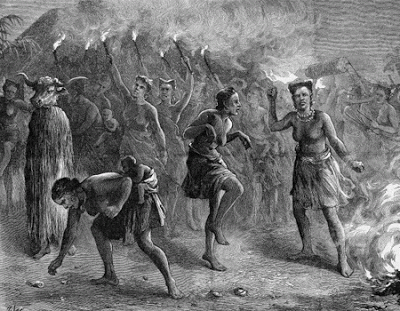Obeah and Gender
Ha! I'm the Obeah woman, above pain
I can eat thunder and drink the rain
I kiss the moon and hug the sun
And call the spirits and make 'em run
—Nina Simone
lyrics from Simone's 1973 recording of "Obeah Woman"

While Obeah practitioners were both men and women, most of the 'gendered' conversations about Obeah are based on the female figures of Obeah. Obeah-women were prominent, and often leading figures, in the practice of Obeah. This may have to do with the matriarchal set-ups of many native African tribes, religions, and social systems. Fitting with Obeah as a “magic of resistance” many women were drawn to the practice of obeah because it afforded them economic and social advantages that were not possible for them otherwise. The patriarchy enforced by the colonizers often left them subjected to certain barriers and left them particularly susceptible to certain threats, such as domestic violence, poverty, and lack of social support. The promise of helping others in their communities helped to alleviate those issues—not only were some Obeah-women paid to for their consultations, they gained a social power that would have otherwise been available to them in the Caribbean.
Still, the patriarchy pushed by the colonizers still affected the Obeah-women. Although female practitioners of Obeah were sometimes referred to under the umbrella of Obeah-men, as Nathaniel Samuel Murrell outlines in Afro-Caribbean Religions, the very "nomenclature" of obeah-women denoted something particularly scary for the colonizers. To them, the female practitioner of an ‘evil’ practice was akin to the witch— a gendered label that sent fear running through all of the colonies in both the Caribbean and the Americas. (It was this fear of the feminine evil that sent the New England colonies into the frenzy of the Salem Witch Trials.)
Whether Obeah-man or Obeah-woman, the practitioners of Obeah were central to the health, both medical and social, of the communities that they were entrenched within in the Caribbean. Built on the idea of resistance and empowerment, with the right apprenticeship almost anyone could enter the world of Obeah as a practitioner. They were much needed and much desired, parts of Caribbean social and cultural structures.
Image source: Obeah Women Resisting from "An Act for the substance, clothing, and the better regulation and government of slaves, for enlarging the powers of the council of protection; for preventing the improper transfer of slaves; and for other purposes," 1816.
